This is the sixth of twenty-five weekly articles in The Tennessee Star’s Constitution Series. Students in grades 8 through 12 can sign up here to participate in The Tennessee Star’s Constitution Bee, which will be held on September 23.
The First Amendment was passed by Congress September 25, 1789, and ratified December 15, 1791 along with the nine other amendments that comprise The Bill of Rights. It reads:
Congress shall make no law respecting an establishment of religion, or prohibiting the free exercise thereof; or abridging the freedom of speech, or of the press; or the right of the people peaceably to assemble, and to petition the Government for a redress of grievances.
The First Amendment combines five specific rights into one fundamental law guaranteeing freedom of expression:
(1) Freedom of Religion
(2) Freedom of Speech
(3) Freedom of the Press
(4) Right to Peaceably Assemble
(5) Right to Petition
“The first amendment is the most important in the American Constitution because it protects the things that make us what we are, including talking, and writing, and worshiping,” Dr. Larry Arnn, professor of politics and history and president of Hillsdale College, wrote recently.
The Founding Fathers knew that these unalienable rights already belonged to the people naturally, given to them by God, their Creator. All that was needed was for certain of these unalienable rights be included in the Bill of Rights to be protected from government.
The First Amendment is first, not simply because it falls at the beginning of a list of amendments, but because it articulates the first freedom and the nature of that freedom. It guarantees the freedom essential to humans as rational beings ~ the freedom to reason and form thoughts.
Freedom of Religion
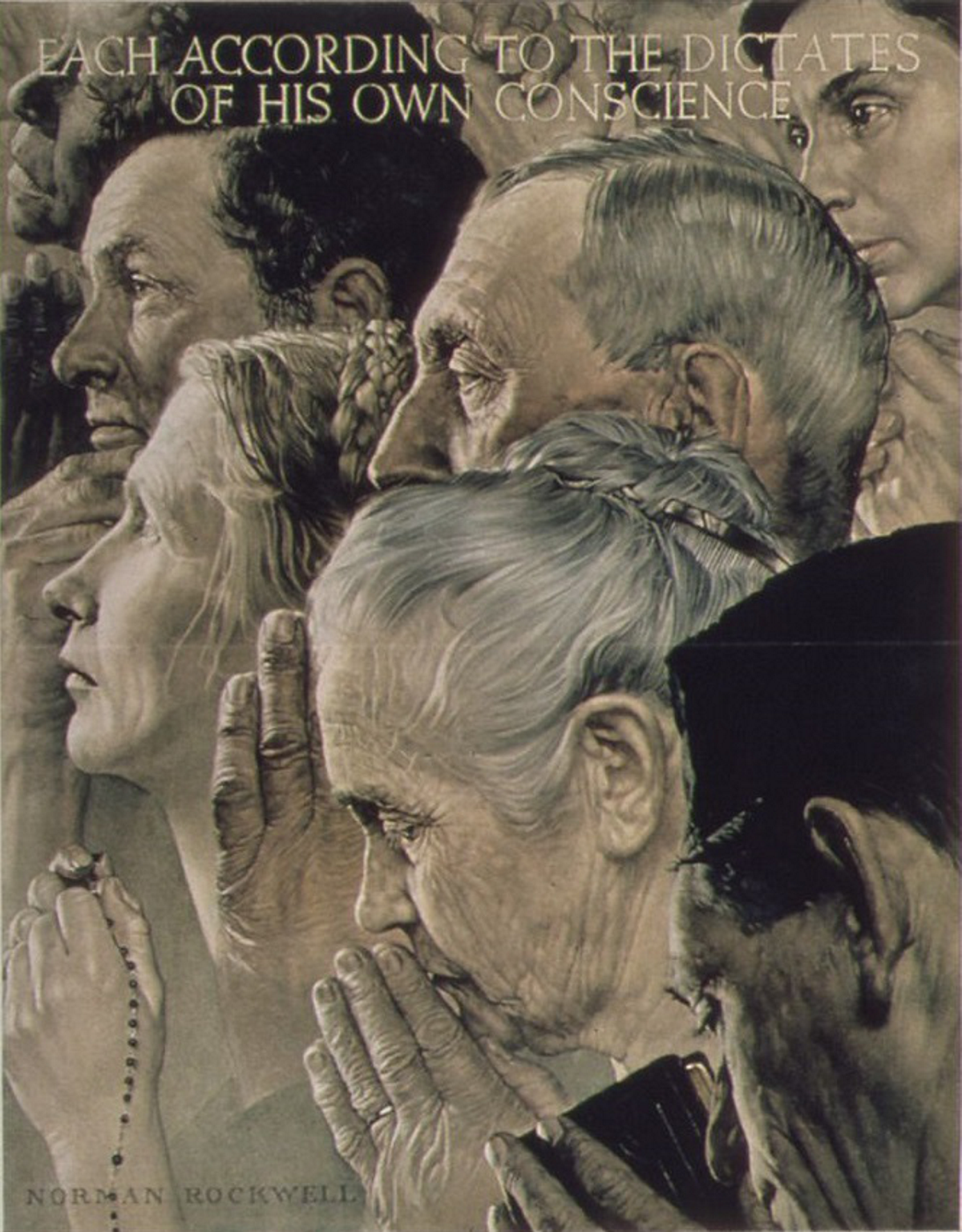
The first clause of the First Amendment protects religious liberty, which the founders considered to be of paramount importance. They knew that religion increased virtue among the people, and they contended such public virtue was necessary to maintain good government in a free republic.
“The only foundation for a useful education in a republic is to be laid in religion. Without this, there can be no virtue, and without virtue there can be no liberty, and liberty is the object and life of all republican governments,” Benjamin Rush, a signor of the Declaration of Independence, said in 1806, as he reflected back on the earlier events of his life..
To which “religion” does the First Amendment refer?
The men who created the republic understood that it must refer to “all sound religions,” which, from their various personal writings on the topic, contained the following fundamental beliefs, in their view: There exists a Creator who made all things and should be worshiped; The Creator has revealed a moral code which distinguishes right from wrong; The Creator holds mankind responsible for the way they treat one another; There is a life after this one where mankind will be judged.
In the founding era, these beliefs were considered basic and necessary for the well-being and happiness of the people.
The original intent of the first part of the religious liberty clause was simply to limit Congress, and thus the national government, from establishing an official national religion – “Congress shall make no law respecting the establishment of religion.”
The second part of the clause was to prevent Congress from restricting people’s actions upon their beliefs – “… or prohibiting the free exercise thereof.” The religious liberty clause restrained the federal government but did not restrain the states. The states were free to make their own laws concerning religious beliefs and practices.
In 1775, no fewer than nine colonies had established state religions. Massachusetts, Connecticut, and New Hampshire had systems of local church establishment in favor of the Congregationalists. In the South, from Maryland on down, the establishments were Episcopal. In New York, there was a system of locally supported Protestant clergy.
After the Constitution and the Bill of Rights were ratified by 1791, several of these former colonies continued to have some element of established state religions for a time.
Religions that were not established in those states were concerned about their rights, and, though they believed the “establishment clause” of the First Amendment — “Congress shall make no law respecting an establishment of religion”–protected those rights at a national level, they remained unsure about how well those rights were protected within their own states.
In Virginia, for instance, Baptists had been treated unfairly during the Colonial period when the Anglican Church was the officially established religion of the colony.
In 1786, the Virginia State Legislature and the governor formally disestablished the Anglican Church, but the Baptists were still concerned, a concern they expressed effectively to James Madison, who eventually became the champion of the Bill of Rights in the first Congress.
The Baptists of Danbury, Connecticut were still concerned about their own state of Connecticut infringing on their religious liberty a decade after the First Amendment was ratified. So in 1801 they wrote a famous letter to President Thomas Jefferson in which they asked for his opinion on the issue.
Our [state] constitution of government is not specific. Our ancient charter, together with the laws made coincident therewith, were adapted as the basis of our government at the time of our revolution. And such has been our laws and usages, and such still are, [so] that Religion is considered as the first object of Legislation, and therefore what religious privileges we enjoy (as a minor part of the State) we enjoy as favors granted, and not as inalienable rights.
“I contemplate with sovereign reverence that act of the whole American people which declared that their legislature would ‘make no law respecting an establishment of religion, or prohibiting the free exercise thereof,’ thus building a wall of separation between Church and State,” Jefferson responded.
Jeffersons’s response asserting “a wall of separation between Church and State,” though not specifically language found in the Constitution or any amendment, was cited frequently in decisions by the Supreme Court in the 20th century.
In a 1940 Supreme Court case, for instance, Cantwell v. Connecticut, Jesse Cantwell, a Jehovah’s Witness, was distributing religious materials in a Catholic neighborhood. Connecticut required a permit to solicit religious materials which he did not possess, so he was arrested. Ultimately, the case was decided by the Supreme Court which ruled that the first amendment guaranteed freedom of belief as well as freedom to act on that belief and that it was unconstitutional for a state to require a permit.
Some believe that current court decisions prohibiting prayer in public schools, and particularly Christian prayer in public schools, are a dramatic misinterpretation of the actual establishment clause of the First Amendment, which says only that “Congress shall make no law respecting an establishment of religion.”
Freedom of Speech
The next two clauses of the First Amendment protect Freedom of Speech and Freedom of the Press. These two are similar in nature in that “speech” in the broadest sense can be vocal, written, published, broadcast or displayed.
Narrowly defined, Freedom of Speech refers only to the right to speak freely in either a private or public setting. The Federalist Party leaders in the 1790s would call this narrowly defined speech “utterances.”
Speech can also refer to personal expressions that are not simply verbal “utterances,” such as holding a sign or engaging in specific conduct, such as burning of an American flag, a Bible, or a Koran.
More broadly, speech also refers to “speaking” via the written word in letters or in publications, such as newspapers and magazines or books, and on broadcast media, such as radio, television, and the internet, so in this sense Freedom of the Press is a subset of Freedom of Speech.
These rights were not well-defined by the men who created the First Amendment because there were not a lot of cases concerning speech or press in the beginning of the republic, but it is thought the original intent of these rights was to primarily protect political speech, for the people to be free to criticize the government.
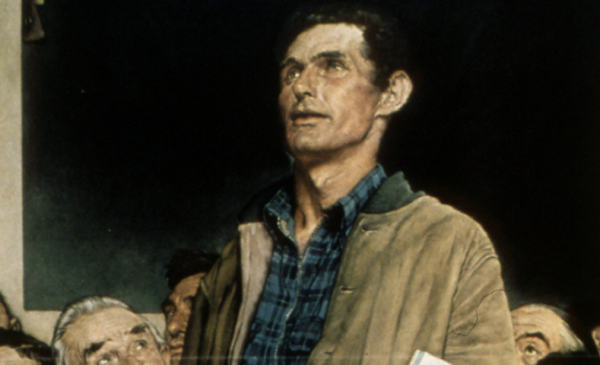
The Founding Fathers–and the framers of the Constitution– likewise knew such freedoms were vital in protecting advancement of truth, science, morality and arts.
If there was any doubt in the minds of Samuel Adams and the other Anti-Federalists in the wisdom the Massachusetts Compromise–the insistence that ratification of the Constitution could only come on the promise by the Federalists that a Bill of Rights, and in particular the First Amendment, would be added to the Constitution–the conduct of his own distant cousin, now the President of the United States and leader of the Federalist Party, quickly disabused them of that notion.
Less than seven years after the First Amendment was ratified, President John Adams signed into law the Sedition Act on July 14, 1798. It was one of four bills signed by President Adams at about the same time that, together are referred to as The Alien and Sedition Acts. It was the Sedition Act, however, that undermined the First Amendment in a way that many opponents at the time–and almost every legal scholar today–considered unconstitutional.
The Alien Acts extended the number of years immigrants had to remain in the country before becoming citizens from 5 to 14; in the case of war, males of the enemy nation could be arrested and detained; also, non-citizens suspected of plotting against the U. S. could be deported.
The Sedition Act made it a crime to publish writings intended to defame the government, Congress, or the President or to incite unrest in the nation. Federalist supporters of the Sedition Act argued that freedom of the press did not extend to seditious speech against the government because it destroys confidence in government.
In effect, the Sedition Act utterly gutted the First Amendment.
The doctrine of Judicial Review–the idea that the Supreme Court could invalidate a law if it deemed it unconstitutional–had not yet been established, and so this unconstitutional act would stay on the books until it expired and a new President, Thomas Jefferson, elected in a thorough trouncing of Adams in 1800, would not renew it.
The language of the Sedition Act was a full throated rejection of both the Freedom of Speech and Freedom of the Press clauses of the First Amendment:
If any person shall write, print, utter or publish, or shall cause or procure to be written, printed, uttered or published, or shall knowingly and willingly assst or aid in writing, printing, uttering or publishing any false, scandalous and malicious writing or writings against the government of the United States, or either house of the Congress of the United States, or the President of the United States, with intent to defame the said government, or either house of the said Congress . . . then such a person, being thereof convicted before any court of the United States having jurisdiction thereof, shall be punished by a fine not exceeding two thousand dollars, and by imprisonment not exceeding two years.
The Anti-Federalist Republicans argued at the time that criticism of the government was absolutely protected because it was the main intent of freedom of speech/press.
James Madison, for instance, who had been, along with Alexander Hamilton, one of the leading Federalists arguing on behalf of ratification of the Constitution, now had become one of the leading members of the emerging Democratic-Republican Party, along with Thomas Jefferson, that opposed the Federalist Party of Adams and Hamilton. Madison said that the Sedition Act attacked the “right of freely examining public characters and measures and of free communication among the people.”
The Federalist Party, which controlled the Presidency under John Adams, as well as the Senate and the House of Representatives, paid scant attention to Madison’s criticism.
The Sedition Act passed the Senate on a 22-9 party line vote, and in the House on a 60-46 party line vote. Adams quickly signed it into law.
The “speech” or “utterance” prohibition in the Sedition Act was soon tested by a citizen by the name of Luther Baldwin in Newark, New Jersey. Baldwin was in the crowd as President Adams passed by with his entourage.
A cannon blast saluted the president:
When one in the crowd commented that “there goes the President and they are firing at his ass,” Luther Baldwin replied that he didn’t care “if they fired through his ass.” Incredibly, Baldwin was arrested, convicted and imprisoned for this remark. He remained in prison until he paid the hefty fine specified in the law, as well as the associated court fees.
Having been successfully used to attack the Freedom of Speech clause of the the First Amendment, The Sedition Act was soon used to successfully attack the Freedom of the Press clause as well.
Freedom of the Press

Both clauses of the First Amendment were at play in the case of Matthew Lyon, a Vermont Republican congressman, who was put on trial under The Sedition Act in October 1798.
Lyon had written a letter which was published in a Republican newspaper criticizing President Adams for ‘a continued grasp for power.’ Lyon had also read a poem at several public meetings written by Joel Barlow who jokingly wondered why Congress had not sent Adams to a mad-house. Lyon was against a potential war with France and a land tax to raise money for war preparations.
The U. S. marshal, a Federalist appointee, indicted Lyon and assembled a jury from Vermont towns know to be Federalist strongholds.
Lyon was quickly found guilty on October 10, 1978, sent to jail for 4 months, and fined $1,000. While in jail, he was re-elected to Congress.
Benjamin Franklin’s grandson, Benjamin Franklin Bache, was another critic of Adams arrested under The Sedition Act, specifically for what he published in his newspaper, The Aurora, printed ironically on printing presses he had inherited from his famous grandfather.
President Adams, Bache wrote in The Aurora, “has appointed Alexander Hamilton inspector general of the Army, the same Hamilton who published a book to prove he is an adulterer . . . Mr. Adams ought hereafter to be silent about French principles.”
“Soon Bache was arrested for violating the law. He died of yellow fever in the summer of 1799, before his case was brought to trial, but during more than two years the law was in effect, twenty-five Americans were prosecuted and imprisoned based upon its provisions,” Michael Patrick Leahy wrote in his 2012 book, Covenant of Liberty:
[The Sedition Act] had been so unpopular it fueled Jefferson’s 1800 presidential victory and, equally important, it swept the Federalists out of their majority in both houses. . . It was also the first time in American political history that the people had risen up in an election and “thrown the bums out.” . . . The Federalist Party would never again hold a majority in either house of Congress. Though the body would not be buried officially for another decade, the Federalist Party of Washington, Adams, and Hamilton was dead.
The Sedition Act expired after John Adams left office and Thomas Jefferson was President in 1801.
The Federalist Party’s demise was a clear sign that the American people strongly supported the First Amendment. Over time, as individuals who felt their First Amendment rights had been violated brought their cases before the federal courts, our modern understanding of its vibrant meaning developed.
Over the years, the Supreme Court has developed its own set of categories of protected and unprotected speech and press. The guarantees in these two clauses protect individuals against the actions of government, not against the actions of private individuals. They apply to both state and national governments. They cover speakers and writers regardless of media source (books, magazines, or internet.) Radio and television receive less constitutional protection.
The Freedom of Speech clause covers expressive actions such as carrying a flag, wearing a symbol, and actions that are necessary in expressing one’s opinion like buying a microphone. Political speech includes giving money contributions to candidates who run for office. Free speech extends to all viewpoints.
And, yes, there are certain limitations on freedom of speech and press. These include speech inciting individuals to break the law; obscene works; threats of violence; fighting words or personal insults directed toward a specific person that are likely to cause a fight; speech owned by others that may violate intellectual property laws; and certain types of commercial advertising such as misleading claims on products.
One of those limits results from the “clear and present danger” standard established in 1917 when the country was at war.
The Supreme Court case, Schenck v. U. S., involved Charles Schenck, general secretary of the Socialist Party of America and the Espionage Act of 1917, passed by Congress in order to prohibit interference with military operations, recruitment, insubordination and support of hostile enemies during wartime.
This case would define the limits of the First Amendment’s right to free speech.
Schenck organized the distribution of 15,000 flyers advocating that draftees should resist the draft, that they would relinquish their constitutional rights as soldiers and enter into involuntary servitude, which the 13th amendment outlawed.
He was arrested along with another member of his group, convicted and sentenced to 6 months in prison. They appealed to the U. S. Supreme Court, contending that the Espionage Act violated the First Amendment’s protection of free speech.
In his majority opinion, Justice Oliver Wendell Holmes wrote that during wartime “ . . .The question in every case is whether the words are used in such circumstances and are of such a nature as to create a clear and present danger that they will bring about the substantive evils that Congress has a right to prevent.”
Until a court case in 1925, Gitlow v. New York, when Benjamin Gitlow was arrested for distributing copies of a left-wing manifesto which advocated the “forceful” overthrow of the U. S. government, the First Amendment only applied to the national government.
The Supreme Court ruled that since Gitlow’s actions did not result in violence, that his speech and publication rights had been violated in New York, resulting in the beginning of a precedent that the First Amendment rights would also apply to the states based on the due process clause within the Fourteenth Amendment. (Amendment 14, Section 1). Gitlow’s speech advocating forceful overthrow, however, was not protected by the First Amendment as a result of the court’s “clear and present danger” test.
The Supreme Court replaced the ‘clear and present danger’ standard with the “imminent lawless action” test. This standard is still applied by the Court today to free speech cases involving advocacy of violence.
In recent times, the Espionage Act also remains intact with Chelsea Manning and Edward Snowden having been charged with its violation.
Right to Peaceably Assemble
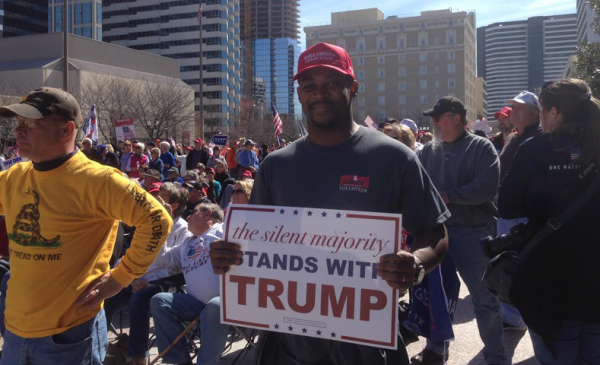
The First Amendment protects “the right of the people peaceably to assemble.” In 1774, the Declaration and Resolves of the First Continental Congress proclaimed that colonists “have a right peaceably to assemble, consider of their grievances, and petition the King; and that all prosecutions, prohibitory proclamations, and commitments for the same, are illegal.” By 1789, four of the thirteen original colonies included the right to assemble in their constitutions or charters.
During the debate in Congress in the summer of 1789 over the details of the amendments we now know as the Bill of Rights, Representative Theodore Sedgwick, a member of the Federalist Party, moved to take out the words “to assemble” from the wording of the First Amendment. He thought the words were unnecessary.
“If people freely converse together, they must assemble for that purpose; it is a self-evident, unalienable right which the people possess,” he argued.
Sedgwick was here offering a very detailed version of the broader case made against the entire Bill of Rights by his fellow Federalist, Alexander Hamilton.
But Segwick’s argument was rejected by the entire Congress, which passed the First Amendment on September 25, 1789 that included the language “the right of the people peaceably to assemble.”
So that fourth right within the First Amendment became part of the Constitution when it was ratified by the requisite number of states on December 15, 1791.
“The freedom of assembly has been at the heart of some of the most important social movements in American history: antebellum abolitionism, women’s suffrage in the nineteenth and twentieth centuries, the labor movement in the Progressive Era and after the New Deal, and the Civil Rights movement, “John D. Inazu wrote in the Tulane Law Review in 2010.
Contemporary political movements, such as the Tea Party movement, have also grown through the exercise of the freedom of assembly. In fact, it was the exercise of that right in more than 900 cities by an estimated 1 million Americans on April 15, 2009 that really launched that movement onto the national political scene, and led directly, in turn, to the Republican takeover of the House of Representatives in 2010 and indirectly to the election of President Trump in 2016.
A key word included in this clause of the First Amendment, one that is uniquely part of the American tradition is “peaceably.”
“Abraham Lincoln once called ‘the right of peaceable assembly’ part of ‘the Constitutional substitute for revolution,’ “Inazu remarked.
Americans have traditionally understood the importance of “peaceably” assembling. Unlike other countries where public assemblies often disintegrate into violent encounters between opposing groups, Americans have, for the most part, not only enjoyed their own right to peaceably assemble–they have respected the rights of their political opponents to peaceably assemble.
“Groups invoking the right of assembly have inherently been those that dissent from the majority and consensus standards endorsed by government,” Inazu noted:
Second, claims of assembly have been public claims that advocate for a visible political space distinguishable from government.
Finally, manifestations of assembly have themselves been forms of expression—parades, strikes, and demonstrations, but also more creative forms of engagement like pageants, religious worship, and the sharing of meals.
“These three themes—the dissenting assembly, the public assembly, and the expressive assembly—emerge from the groups that have gathered throughout our nation’s history,” Inazu concluded.
Right to Petition
The final clause of the free expression amendment is “Congress shall make no law . . . abridging . . . the right of the people . . . to petition the Government for a redress of grievances.” The right to petition a monarch, or, a government, dates all the way back to the Magna Carta of 1215. It originally was a right given only to noblemen. By 1669, every British citizen had the right to petition Parliament, then, by 1689, The Declaration of Rights made it law that citizens petitioning a monarch with a list of complaints could not be punished.
By 1642, Massachusetts, in its charter, “Body of Liberties,” became the first of the British colonies to add the right to petition any governmental body or official. North Carolina, Pennsylvania, Delaware, New Hampshire and Vermont also wrote it into their constitutions while the rest of the colonies had an implied right to petition.
In 1776, of course, Thomas Jefferson listed the grievances against King George III in the Declaration of Independence.
Historically, petitioning the government was one of the only recourses the people had to communicate with monarchs, appointed or elected officials. Petitions were taken seriously in early days and, quite frequently, the government would not only hear the grievances, but would enact laws to satisfy those grievances.
The right to petition the government did not guarantee that the government had to take action, however. After the Constitution established separation of powers within the national government, these petitions would be presented then handed down to a committee where they may be lost or ignored.
In 1836, the U. S. House of Representatives decided that it would not entertain petitions concerning slavery nor concerning the abolition of slavery. Those would simply be “tabled.” “All petitions relating . . . to the subject of slavery . . . shall, without being either printed or referred, be laid upon the table and that no further action whatever be had thereon.”
By 1840, thanks to Congressman John Quincy Adams, the former president, what was known as the “gag rule” on slavery was repealed. Regardless, petitions on anti-slavery were subsequently sent to committees, where they died.
Other famous petitions include those, beginning in 1871, submitted to the United States Congress which asked for women to be granted the right to vote in the form of a constitutional amendment. One such petition from 1917 petitioning the U. S. Senate is pictured above. The women’s suffrage movement, their peaceful assemblies and petitions, was victorious as a result of the 19th amendment having been added to the Constitution in 1920.
Petitioning the government today means to provide information to elected leaders about unpopular policies; expose misconduct, waste, corruption, and incompetence; and vent popular frustrations without endangering the public order.
Lobbying, letter-writing, email or social media campaigns, testifying before a government body, filing lawsuits, collecting signatures for ballot initiatives, peaceful protests and picketing: all public articulation of issues, complaints and interests requesting government action qualifies under the petition clause.
Our inherent and unalienable right to freedom of expression is outlined within our First Amendment specifically as freedom of religion, speech and press and the right to peaceably assemble and to petition the government for a redress of grievances. The guarantee that government will protect these rights is necessary for the virtue and happiness of the people and the survivability of our republic. Freedom of expression is the very essence of what it means to be American.
# # #
Claudia Henneberry taught Social Studies and English in North Carolina, then retired to be a stay-at-home mom who raised her two daughters.
Since her retirement as a teacher, Claudia has substitute-taught and been involved in reviewing textbooks. She testified in Tennessee before the Textbook Commission and the State Senate Education Committee on inaccuracies, biases and omissions in the social studies texts.
Claudia started a “Ladies for Liberty” group with a neighbor to encourage women to learn about the Constitution, and organized several summers of Camp Constitution held in Brentwood, Tennessee.

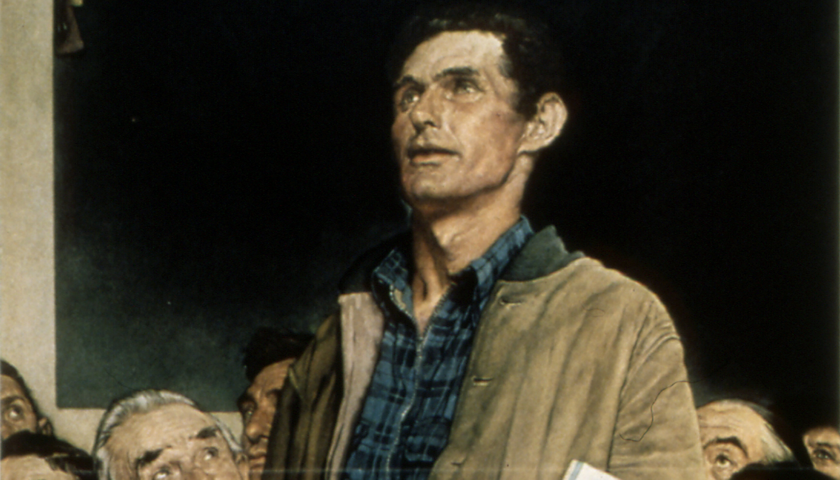

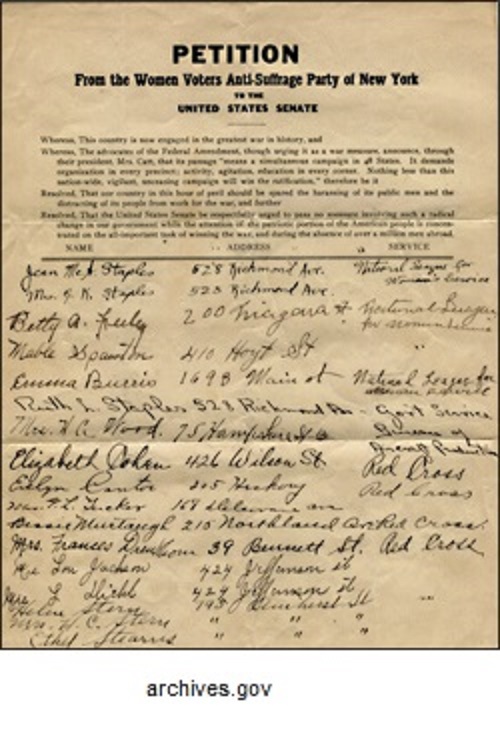




[…] group, Freedom From Religion Foundation demanding the plaque be taken down due to alleged First Amendment […]